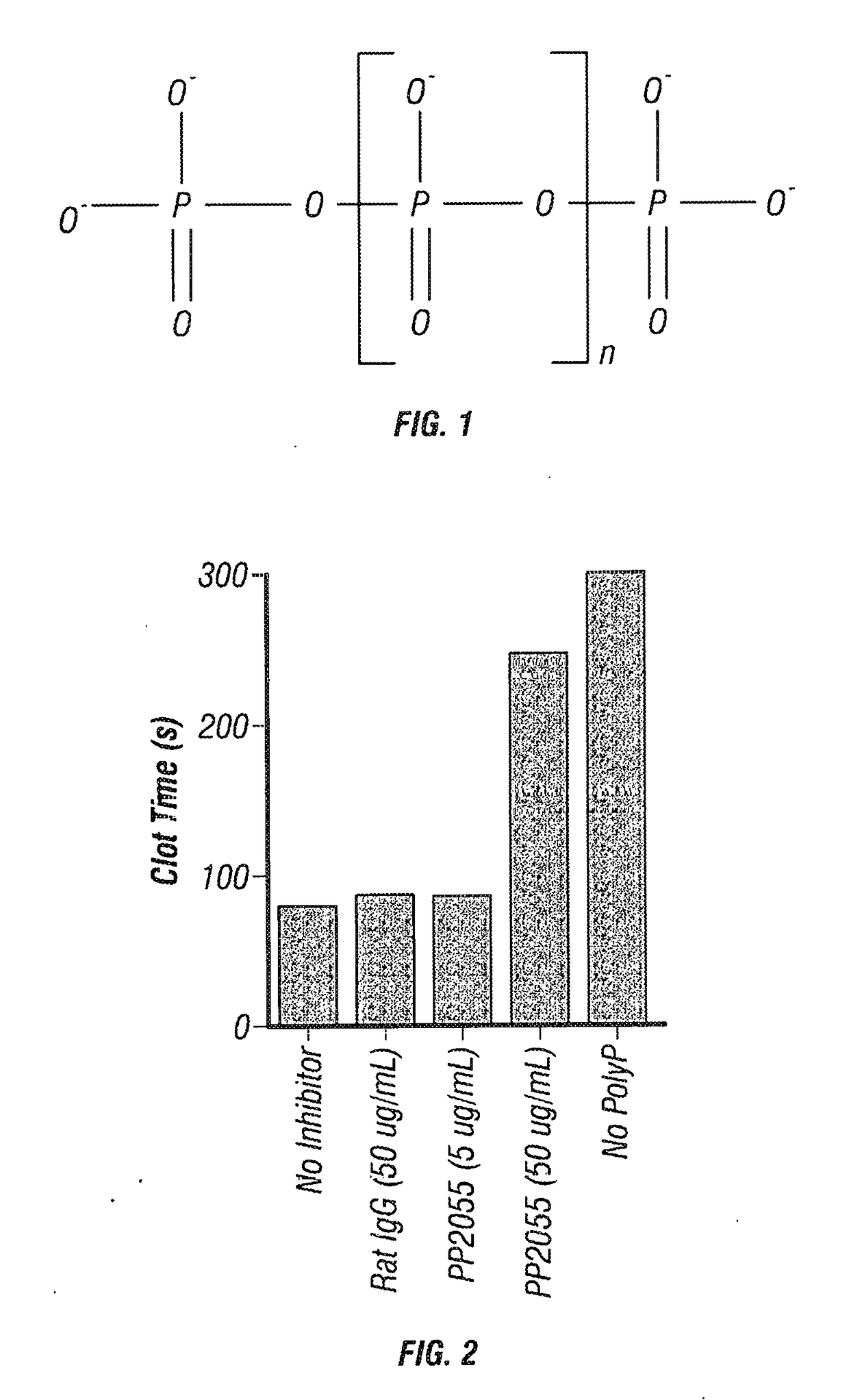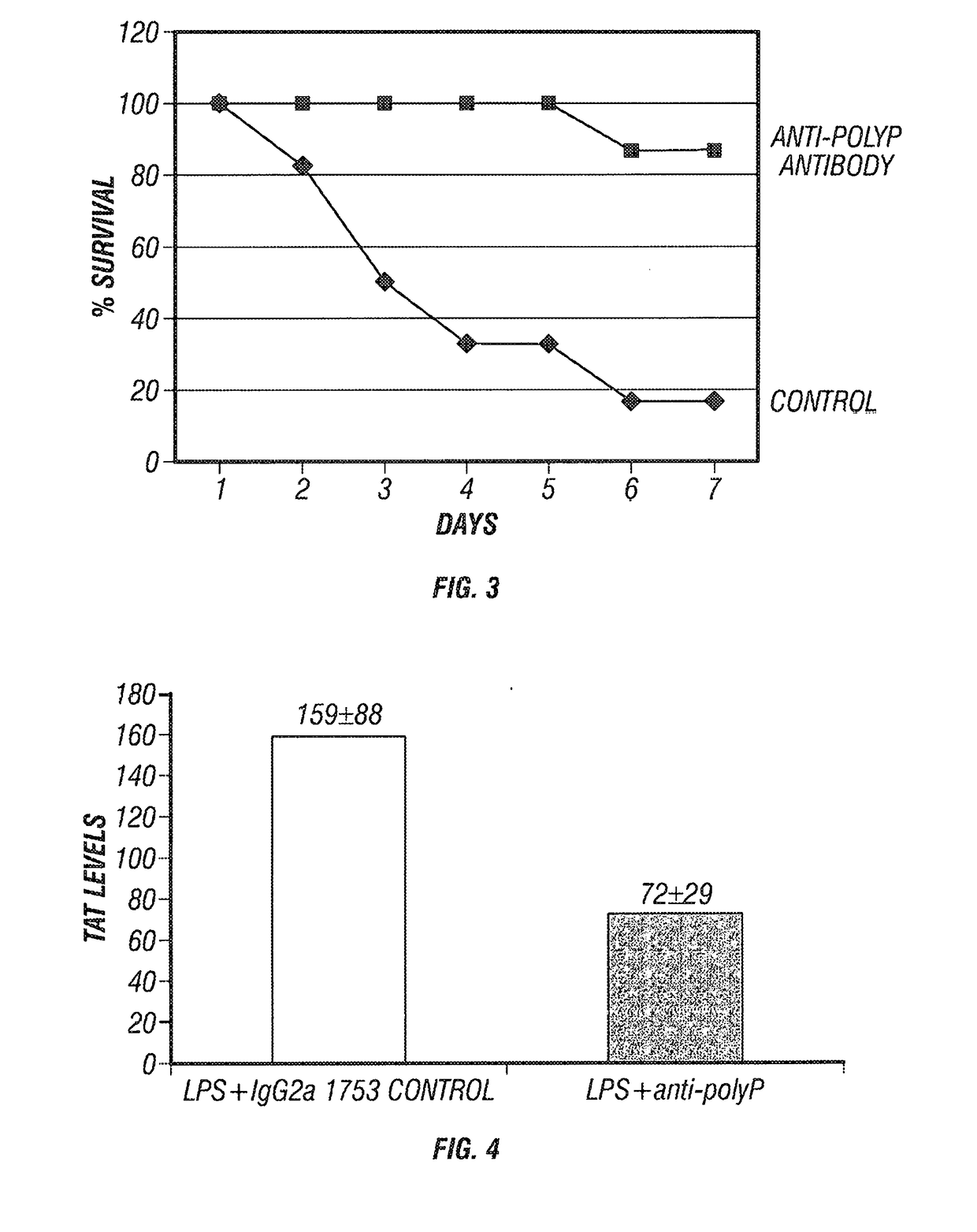Antibodies to polyphosphate decrease clot formation, decrease inflammation, and improve survival
a polyphosphate and anti-clot technology, applied in the field of medicine, disease and biology, can solve the problems of organ failure, organ failure, organ failure, endothelial dysfunction, etc., and achieve the effect of reducing the load of polyps
- Summary
- Abstract
- Description
- Claims
- Application Information
AI Technical Summary
Benefits of technology
Problems solved by technology
Method used
Image
Examples
example 1
[0155]Autoimmune mice (NZBWF1 / J) generate antibodies against a variety of their own proteins, often intracellular proteins. The auto immune mice were screened to determine if any mice were producing antibodies to polyP. PolyP for the assay was biotinylated and bound to the screening plate via streptavidin. Antibodies that bound to the polyP were then detected by a standard enzyme linked immune assay (ELISA) using biotinylated polyP captured on 96-well plates that had been coated with streptavidin.
[0156]Antibodies were detected and developed as monoclonal antibodies using standard technique. A particular anti-polyP monoclonal antibody was named PP2055. However, other anti-polyP antibodies are contemplated from the auto immune mice, and other antibody producing sources.
[0157]As shown in FIG. 2, in coagulation assays in which coagulation was initiated by recalcification of citrated human plasma in the presence of polyP, the polyP shortened the clotting time relative to control without ...
PUM
| Property | Measurement | Unit |
|---|---|---|
| concentration | aaaaa | aaaaa |
| body temperature | aaaaa | aaaaa |
| temperatures | aaaaa | aaaaa |
Abstract
Description
Claims
Application Information
 Login to View More
Login to View More - R&D
- Intellectual Property
- Life Sciences
- Materials
- Tech Scout
- Unparalleled Data Quality
- Higher Quality Content
- 60% Fewer Hallucinations
Browse by: Latest US Patents, China's latest patents, Technical Efficacy Thesaurus, Application Domain, Technology Topic, Popular Technical Reports.
© 2025 PatSnap. All rights reserved.Legal|Privacy policy|Modern Slavery Act Transparency Statement|Sitemap|About US| Contact US: help@patsnap.com



